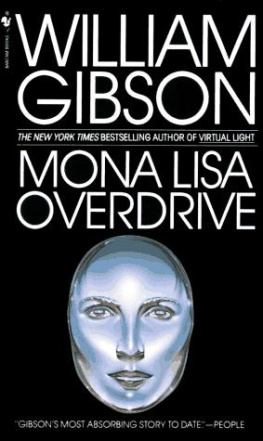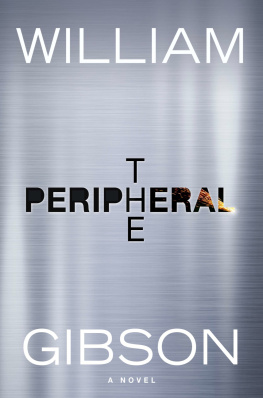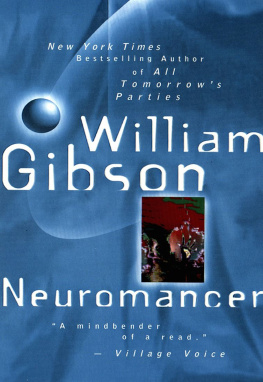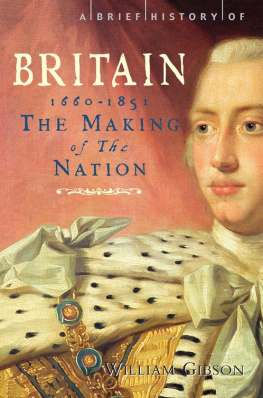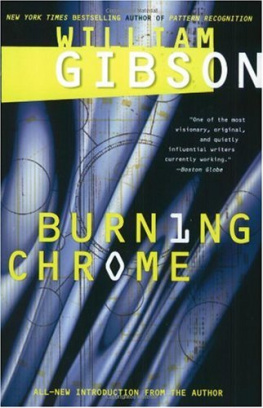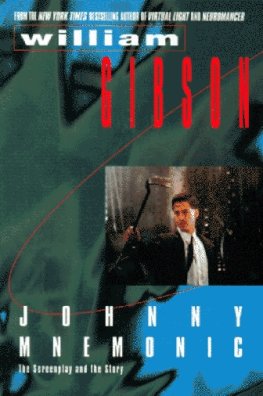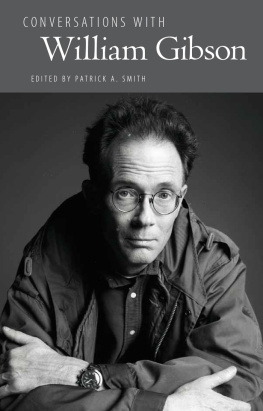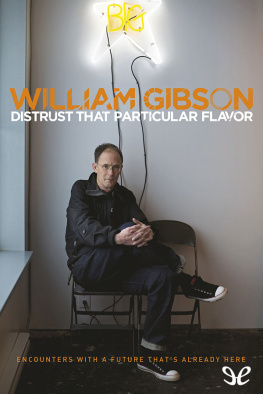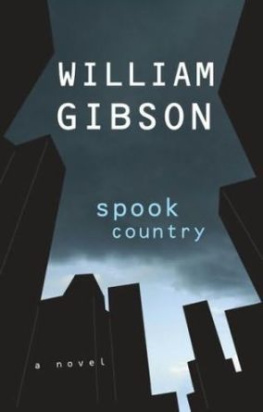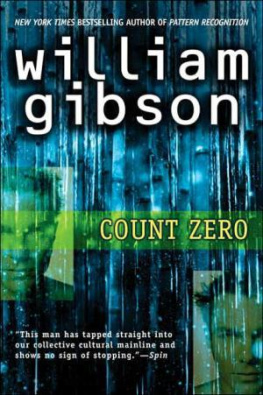William Gibson - Thirteen Views Of A Cardboard City
Here you can read online William Gibson - Thirteen Views Of A Cardboard City full text of the book (entire story) in english for free. Download pdf and epub, get meaning, cover and reviews about this ebook. genre: Science fiction. Description of the work, (preface) as well as reviews are available. Best literature library LitArk.com created for fans of good reading and offers a wide selection of genres:
Romance novel
Science fiction
Adventure
Detective
Science
History
Home and family
Prose
Art
Politics
Computer
Non-fiction
Religion
Business
Children
Humor
Choose a favorite category and find really read worthwhile books. Enjoy immersion in the world of imagination, feel the emotions of the characters or learn something new for yourself, make an fascinating discovery.

- Book:Thirteen Views Of A Cardboard City
- Author:
- Genre:
- ISBN:0-06-105901-3
- Rating:4 / 5
- Favourites:Add to favourites
- Your mark:
- 80
- 1
- 2
- 3
- 4
- 5
Thirteen Views Of A Cardboard City: summary, description and annotation
We offer to read an annotation, description, summary or preface (depends on what the author of the book "Thirteen Views Of A Cardboard City" wrote himself). If you haven't found the necessary information about the book — write in the comments, we will try to find it.
Thirteen Views Of A Cardboard City — read online for free the complete book (whole text) full work
Below is the text of the book, divided by pages. System saving the place of the last page read, allows you to conveniently read the book "Thirteen Views Of A Cardboard City" online for free, without having to search again every time where you left off. Put a bookmark, and you can go to the page where you finished reading at any time.
Font size:
Interval:
Bookmark:
William Gibson
Thirteen Views Of A Cardboard City
ONE. DEN-EN
Low angle, deep perspective, establishing Tokyo subway station interior.
Shot with available light, long exposure; a spectral pedestrian moves away from us, into background. Two others visible as blurs of motion.
Overhead fluorescents behind narrow rectangular fixtures. Ceiling tiled with meter-square segments (acoustic baffles?). Round fixtures are ventilators, smoke-detectors, speakers? Massive square columns recede. Side of a stairwell or escalator. Mosaic tile floor in simple large-scale pattern: circular white areas in square tiles, black infill of round tiles. The floor is spotless: no litter at all. Not a cigarette butt, not a gum-wrapper.
A long train of cardboard cartons, sides painted with murals, recedes into the perspective of columns and scrubbed tile: first impression is of a children's art project, something choreographed by an aggressively creative preschool teacher. But not all of the corrugated cartons have been painted; many, particularly those farthest away, are bare brown paper. The one nearest the camera, unaltered, bright yellow, bears the Microsoft logo.
The murals appear to have been executed in poster paints, and are difficult to interpret here.
There are two crisp-looking paper shopping-bags on the tile floor: one near the murals, the other almost in the path of the ghost pedestrian. These strike a note of anomaly, of possible threat: London Transport warnings, Sarin cultists... Why are they there? What do they contain?
The one nearest the murals bears the logo "DEN-EN." Deeper in the image are other cartons. Relative scale makes it easier to see that these are composites, stitched together from smaller boxes. Closer study makes the method of fastening clear: two sheets are punctured twice with narrow horizontal slits, flat poly-twine analog (white or pink) is threaded through both sheets, a knot is tied, the ends trimmed neatly. In fact, all of the structures appear to have been assembled this way.
Deepest of all, stairs. Passengers descending.
TWO. BLUE OCTOPUS
Shallow perspective, eye-level, as though we were meant to view an anamorphic painting.
This structure appears to have been braced with a pale blue, enameled, possibly spring-loaded tube with a white, non-slip plastic foot. It might be the rod for a shower-curtain, but here it is employed vertically. Flattened cartons are neatly lashed to this with poly-tie.
The murals. Very faintly, on the end of the structure, nearest the camera, against a black background, the head of the Buddha floats above something amorphous and unreadable. Above the Buddha are fastened what appear to be two packaging-units for Pooh Bear dolls. These may serve a storage function. The mural on the face of the structure is dark, intricate, and executed (acrylic paints?) with considerable technique. Body parts, a sense of claustrophobic, potentially erotic proximity. A female nude, head lost where the cardboard ends, clutches a blue octopus whose tentacles drape across the forehead of a male who seems to squat doglike at her feet. Another nude lies on her back, knees upraised, her sex shadowed in perspective. The head of a man with staring eyes and pinprick pupils hovers above her ankles; he appears to be smoking but has no cigarette.
A third nude emerges, closest to the camera: a woman whose features suggest either China or the Mexico of Diego Rivera.
A section of the station's floor, the round black tiles, is partially covered with a scrap of grayish-blue synthetic pile carpeting.
Pinned eyes.
THREE. FRONTIER INTERNATIONAL
Shot straight back into what may be a wide alcove. Regular curves of pale square tiles.
Four structures visible.
The largest, very precisely constructed, very hard-edged, is decorated with an eerie pointillist profile against a solid black background: it seems to be a very old man, his chin, lip-less mouth and drooping nose outlined in blood red. In front of this is positioned a black hard-sided overnighter suitcase.
Abutting this structure stands another, smaller, very gaily painted: against a red background with a cheerful yellow bird and yellow concentric circles, a sort of Cubist ET winks out at the camera. The head of a large nail or pin, rendered in a far more sophisticated style, penetrates the thing's forehead above the open eye.
A life-sized human hand, entirely out of scale with the huge head, is reaching for the eye.
Nearby sits an even smaller structure, this one decorated with abstract squares of color recalling Klee or Mondrian. Beside it is an orange plastic crate of the kind used to transport sake bottles. An upright beer can. A pair of plastic sandals, tidily arranged.
Another, bigger structure behind this one. Something painted large-scale in beige and blue (sky?) but this is obscured by the Mondrian. A working door, hinged with poly-tie, remains unpainted: the carton employed for the door is printed with the words "FRONTIER INTERNATIONAL."
Individual styles of workmanship start to become apparent.
Deeper in the image, beyond what appears to be a stack of neatly-folded blankets, is located the blue enamel upright, braced against the ceiling tile. Another like it, to its right, supports a paper kite with the printed face of a samurai.
FOUR. AFTER PICASSO
Shallow perspective of what appears to be a single, very narrow shelter approximately nine meters in length. Suggests the literally marginal nature of these constructions: someone has appropriated less than a meter at the side of a corridor, and built along it, tunneling like a cardboard seaworm.
The murals lend the look of a children's cardboard theater.
Punch in the underground.
Like so many of the anonymous paintings to be found in thrift shops everywhere, these murals are somehow vaguely after Picasso. Echo of Guernica in these tormented animal forms. Human features rendered flounder-style: more Oxfam Cubism.
Square black cushion with black tassels at its corners, top an uncharacteristically peaked section of cardboard roof. Elegant.
The wall behind the shelter is a partition of transparent lucite, suggesting the possibility of a bizarre ant-farm existence.
FIVE. YELLOW SPERM
We are in an impossibly narrow "alley" between shelters, perhaps a communal storage area. Cardboard shelving, folded blankets.
A primitive portrait of a black kitten, isolated on a solid green ground, recalls the hypnotic stare of figures in New England folk art.
Also visible: the white plastic cowl of an electric fan, yellow plastic sake crate, pale blue plastic bucket, section of blue plastic duck-board, green plastic dustpan suspended by string, child's pail in dark blue plastic. Styrofoam takeaway containers with blue and scarlet paint suggest more murals in progress.
Most striking here is the wall of a matte-black shelter decorated with a mural of what appear to be large yellow inner-tubes with regularly spaced oval "windows" around their perimeters; through each window is glimpsed a single large yellow sperm arrested in midwriggle against a nebulous black-and-yellow background.
SIX. GOMI GUITAR
Extreme close, perhaps at entrance to a shelter.
An elaborately designed pair of black-and-purple Nike trainers, worn but clean. Behind them a pair of simpler white Reeboks (a woman's?).
A battered acoustic guitar strung with nylon. Beside it, a strange narrow case made of blue denim, trimmed with red imitation leather; possibly a golf bag intended to carry a single club to a driving range?
A self-inking German rubber stamp.
Neatly folded newspaper with Japanese baseball stars.
A battered pump-thermos with floral design.
Font size:
Interval:
Bookmark:
Similar books «Thirteen Views Of A Cardboard City»
Look at similar books to Thirteen Views Of A Cardboard City. We have selected literature similar in name and meaning in the hope of providing readers with more options to find new, interesting, not yet read works.
Discussion, reviews of the book Thirteen Views Of A Cardboard City and just readers' own opinions. Leave your comments, write what you think about the work, its meaning or the main characters. Specify what exactly you liked and what you didn't like, and why you think so.

